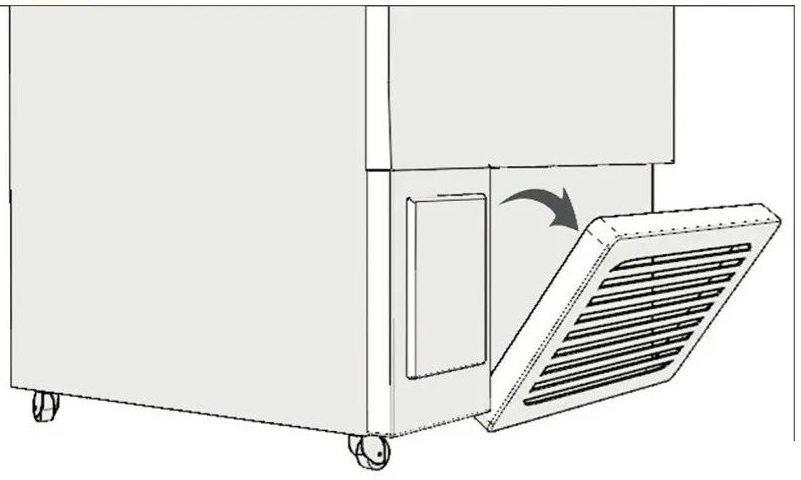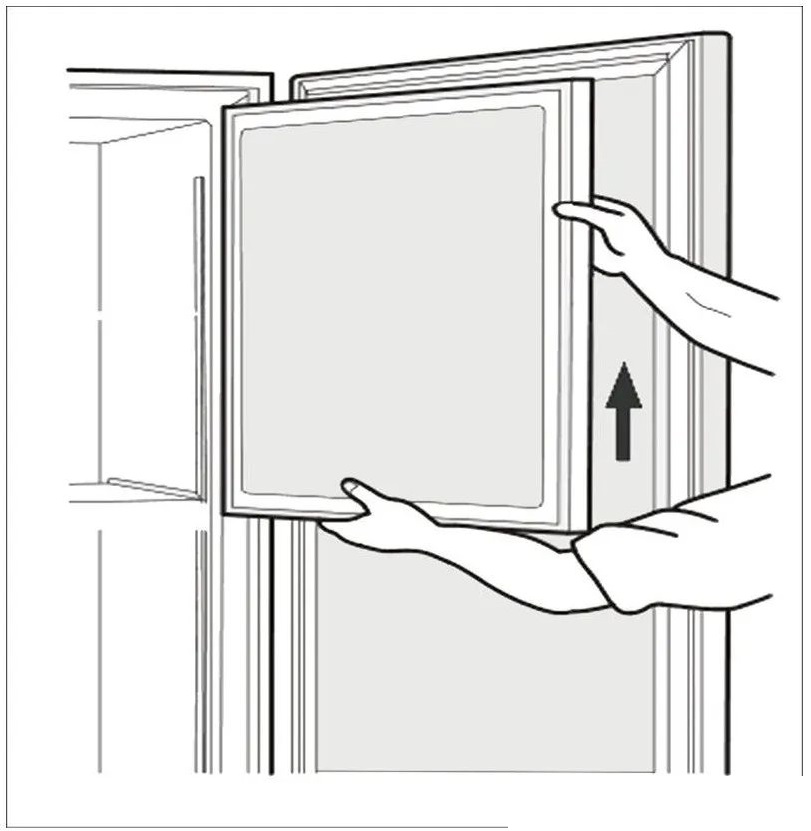1. Use a dry cloth to wipe off the dust from the equipment's exterior, interior, and all accessories. If the equipment is very dirty, use a diluted neutral detergent for cleaning. Use a cloth soaked in clean water to wipe off the detergent, then wipe it dry with a dry cloth.
2. Do not pour water onto the exterior or inside the storage chamber, as this may damage the electrical insulation and cause malfunctions.
3. The compressor and other mechanical components are fully sealed. This equipment does not require lubrication.

1. As shown in the illustration, pull out the cover and remove the filter.
2. Clean the filter with water and let it dry.
3. Put the filter back in place and reattach the cover.
4. If there was a previous condenser temperature alarm, check if the alarm has been canceled.
5. Note: When removing the filter for cleaning, do not touch the condenser directly. Its hot surface may cause injury.

1. Frost usually forms inside the cabinet and on the inner door. Frost may create gaps between the cabinet and door seals, leading to poor cooling performance. Use the ice scraper provided with the equipment to defrost the inner door.
2. If there is an auxiliary cooling device, please turn it off.
3. Remove the items from the cabinet and transfer them to another low-temperature freezer, or place them in a container with frozen liquid carbon dioxide or dry ice.
1. Turn off the power switch.
2. Open the outer door and inner door. As shown in the illustration, lift the inner door upward and remove it. Leave the outer door of the storage cabinet open for a while to allow defrosting.
3. Use a dry cloth to wipe off any water accumulated at the bottom of the cabinet.
1. After cleaning the cabinet and inner door, replace the inner door and restart the equipment according to the operating procedures.
2. Return the items to the fully cooled cabinet.
3. If there is an auxiliary cooling device, turn it back on.